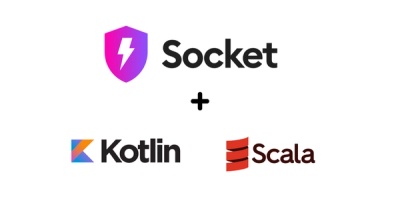
Product
Introducing Scala and Kotlin Support in Socket
Socket now supports Scala and Kotlin, bringing AI-powered threat detection to JVM projects with easy manifest generation and fast, accurate scans.
pydatalens is a Python package designed to streamline the process of Exploratory Data Analysis (EDA), data cleaning, and visualization. It enables data scientists and analysts to quickly prepare, explore, and gain insights from datasets with minimal effort.
git clone https://github.com/gopalakrishnanarjun/pydatalens.git
cd pydatalens
pip install -e .
Install dependencies manually:
pip install pandas numpy matplotlib seaborn
from pydatalens import eda, cleaning, visualizations
import pandas as pd
df = pd.read_csv("your_dataset.csv")
print(eda.summarize(df))
df_cleaned = cleaning.handle_missing(df, strategy="mean")
visualizations.plot_histogram(df_cleaned, column="age")
visualizations.correlation_heatmap(df_cleaned)
from pydatalens import eda
summary = eda.summarize(df)
print(summary)
from pydatalens import cleaning
df = cleaning.handle_missing(df, strategy="median")
df = cleaning.drop_duplicates(df)
from pydatalens import visualizations
visualizations.plot_histogram(df, "column_name")
visualizations.correlation_heatmap(df)
Contributions are welcome! If you'd like to contribute, please fork the repository and submit a pull request.
pydatalens is licensed under the MIT License. See the LICENSE file for more details.
FAQs
A Python package for automatic EDA, data cleaning, and visualization.
We found that pydatalens demonstrated a healthy version release cadence and project activity because the last version was released less than a year ago. It has 1 open source maintainer collaborating on the project.
Did you know?

Socket for GitHub automatically highlights issues in each pull request and monitors the health of all your open source dependencies. Discover the contents of your packages and block harmful activity before you install or update your dependencies.

Product
Socket now supports Scala and Kotlin, bringing AI-powered threat detection to JVM projects with easy manifest generation and fast, accurate scans.

Application Security
/Security News
Socket CEO Feross Aboukhadijeh and a16z partner Joel de la Garza discuss vibe coding, AI-driven software development, and how the rise of LLMs, despite their risks, still points toward a more secure and innovative future.

Research
/Security News
Threat actors hijacked Toptal’s GitHub org, publishing npm packages with malicious payloads that steal tokens and attempt to wipe victim systems.